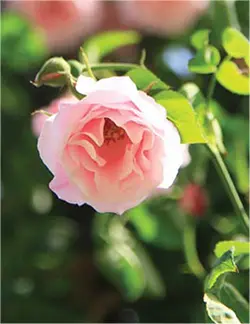
A Symphony of Fragrance and Beauty
The Rose, belonging to the genus Rosa, is a group of shrubs and vines celebrated for their prickly stems and captivating fragrant flowers. Most species of roses are indigenous to Asia, with others native to Europe, North America, and northwestern Africa. The name ‘Rosa’ is believed to derive from an Etruscan form of the Greek ‘Rhodia’, indicating origins from the Greek city of Rhodes. Among its many varieties, Rock rose and Wild rose are notable for their inclusion in traditional flower remedies.
A Floral Emblem in History and Culture
Ornamental roses have been a symbol of beauty and elegance since as early as 500 B.C.E., with significant cultivation in regions like the Mediterranean, Persia, and China. The French empress Joséphine de Beauharnais, known before her marriage to Napoleon as Rose, was an avid rose enthusiast and cultivated a renowned rose garden at her Château de Malmaison, further cementing the flower’s regal status.
The Healing Essence in Traditional Remedies
In the realm of flower remedies, roses, particularly the Rock rose and Wild rose, have been categorized for their unique healing properties. Rock rose is known as an emergency remedy, providing relief in situations of extreme fear or anxiety. It is used in cases of accidents, sudden illness, or when a patient is in a state of fright. On the other hand, Wild rose is recommended for those who feel resigned or disinterested in their current circumstances, helping them to reengage with life and find joy and purpose.
The Rose, with its enchanting fragrance and global heritage, is not just a symbol of beauty; it also embodies therapeutic virtues that have been recognized for centuries. Its cultural and historical significance, coupled with its role in herbal remedies, makes the Rose a flower of multifaceted importance, resonating across various aspects of human life.
